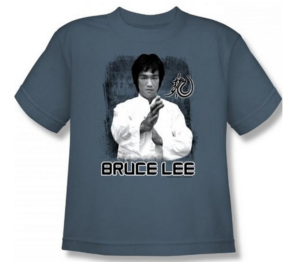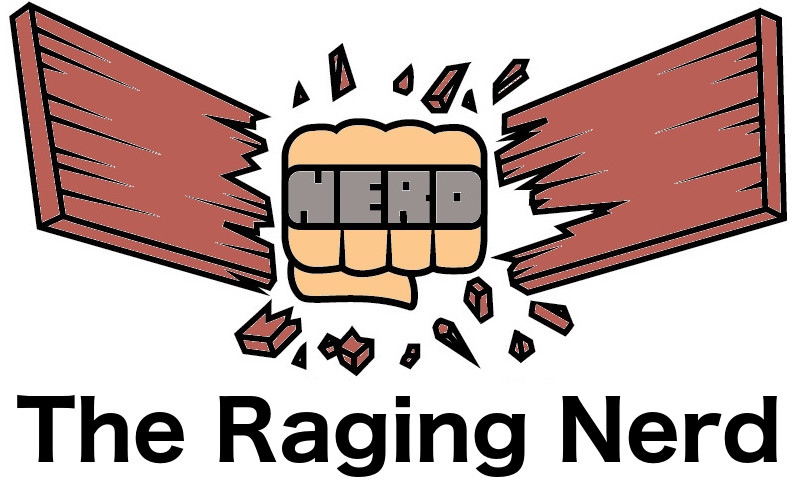- He presided over the bloodiest war in American history. While the total casualties from the Civil War were lower than many other wars that the United States has been involved in, the Civil War remains the single greatest loss of American lives. Over 620,000 casualties, a whopping 2% of the population, was dead by the end of the war. Interestingly, the United States fights most of its wars far away from its home turf. The World Wars, along with many of the USA’s other military engagements, all involved force projection far beyond American borders. Even Pearl Harbor was an attack on Hawaii, which was a territory and not on the mainland. The Civil War was the single most devastating war for the United States in a domestic sense. In a way, this speaks to the warfighting prowess of the USA: the most damage ever inflicted on the country was by Americans!
- He was assassinated. In one sense, this is less extraordinary than its sounds: of all the American presidents that have served, nine have been the subject of an assassination attempt, with four being successful. That means that, on average, one in five American presidents will experience an attempt on their life. What was extraordinary in Lincoln’s case was the way that the assassination worked out: Lincoln had already accomplished what he set out to do at his election, so the assassination was not out of political calculation. It was purely out of spite. John Wilkes Booth wanted to avenge the South. Even more bizarrely, Lincoln had a premonition three days prior, in which there was a corpse in the White House. He asked one of the guards in his dream who was dead, and the guard told him that it was the President, who had died at the hand of an assassin. Lincoln was also the very first president to be assassinated.
- His eerie parallels to JFK. Abraham Lincoln was assassinated by John Wilkes Boothe, who ran from the theater, and was eventually caught in a barn. JFK was assassinated by Lee Harvey Oswald, who ran from a warehouse and was apprehended by police in a theater. If a barn is basically an agricultural warehouse (and it is), Boothe ran from a theater to a warehouse, and Oswald ran from a warehouse to a theater. Kennedy had a secretary who warned him not to go to Dallas, and that secretary’s last name was Lincoln.
- Finally, his face. Abraham Lincoln was noted as an extremely unattractive man with a very asymmetrical face. That asymmetry, however, also made him look very distinctive. Unlike George Washington and other Presidents who looked similar to other men of their era, Lincoln’s face is unforgettable and would never be mistaken for anyone else. A fun story: Lincoln was once accused of being “two-faced” by a woman who confronted him on a train. He responded, “If I had two faces, do you think I’d be wearing this one?”
Cross-Trained Martial Artists Throughout History

A martial arts movie t shirt featuring Bruce Lee
Mixed Martial Arts exploded in popularity in the 2000s. Promotions have come and gone: UFC, Pride, Dream, StrikeForce, Elite XC, and more. There is a distinction here that you must be careful to make: the sport is mixed martial arts. UFC, and all the others, are promotions. So UFC is to MMA as the NFL is to football. Many people enjoy modern MMA, and most of us understand that it involves a mix of styles. What a lot of people don’t know, however, is that the idea of cross-training between martial arts is not new. Many of the most famous martial artists throughout history have cross-trained and learned multiple fighting styles. And hybrid styles are as old as martial arts itself. Here’s a list of several different historical figures who were famous for reasons besides fighting, but who were cross-trained in many different martial arts styles. You may not have seen them on a martial arts movie t-shirt, but they’re important figures nonetheless.
One that may surprise you is Teddy Roosevelt. Most people know of Teddy Roosevelt as the American president famous for his pince-nez glasses and his involvement with the Panama Canal. What a lot of people don’t know is that Teddy Roosevelt also had extensive experience in both jiu jitsu and boxing. He was blind in one eye as a result of an injury sustained while boxing with an Army officer. His involvement in jiu jitsu is even more fascinating: he learned from Yamashita Yoshiaki, a direct student of Jigoro Kano. Jigoro Kano, incidentally, was the founder of Judo. Judo consists of a number of ancient Japanese jiu jitsu techniques codified into a single sport, and Kano’s pupil Yamashita taught those same techniques to Teddy Roosevelt.
A less well-known, but equally interesting practitioner of cross-trained martial arts was E.W. Barton-Wright. Living in the early 20th century, Barton-Wright combined Western boxing and wrestling with jiu jitsu and staff fighting to create a unique martial art he called bartitsu. He even sent letters to Jigoro Kano asking him to send jiu jitsu teachers from Japan to teach at his new bartitsu club. The martial art of bartitsu would later come to the attention of Arthur Conan Doyle, who would incorporate the art as a plot element in his Sherlock Holmes books.One final figure that you may have heard of, but who bears mentioning anyway, is Bruce Lee. While the idea of cross-training has existed for as long as martial arts, Bruce Lee was the person who popularized the idea in modern culture. His martial art, Jeet Kun Do, aims to “use no way as way” by combining whatever styles work best. Each individual practitioner does things differently. Jeet Kun Do is not a distinct art so much as a method for constructing martial arts from scratch.
What’s Special About It?

A Stephen King nerd t shirt
Stephen King’s It has a special place in our culture. King is a prolific author of over 81 books and is known for producing an exceptional amount of copy. Of all popular writers, King is one of the most productive. And yet, many of his other well known works, such as The Stand and the Dark Tower series, do not have the popularity of It. A niche audience may understand a reference to the Dark Tower, and a fair amount of people have seen one of the miniseries adaptations of The Stand. But everybody over the age of twelve seems to know who Pennywise is, even if they only know him as “the clown from that one movie” or have seen him on nerd t shirts. So what gives? What makes It stand out from the rest of King’s oeuvre?
First of all, It exploits a common fear: coulrophobia, also known as fear of clowns. Many people are afraid of clowns, but most of them are unaware that this is a common fear. By disguising his monster as a clown, King plays two games at once. First, he exploits coulrophobia. Second, he can make his monster seem innocent while at the same time using the creepiness of clowns to suggest that there is more to Pennywise than meets the eye. Pennywise is an iconic monster, alongside Freddy Krueger and Jason, because the clown persona allows him to occupy an uncanny valley.
Second of all, the worldbuilding behind the novel gives it depth. There is an entire cosmology behind It, including a pantheon of multi-dimensional gods. Unlike the Lovecraftian cosmology, which is amoral and inscrutable, the gods in this cosmology have a noticeable moral bent: some of them are good and some of them are evil. There is a multi-billion year story behind the whole thing, how It ended up in Derry, Maine, and why it does the things it does. Pennywise is not just a creature with a backstory. It is part of an entire world crafted for the sake of convincing horror.
This stands in stark contrast to pulpy pop horror, such as Nightmare On Elm Street and Friday The 13th. Freddy Krueger and Jason Voorhees are certainly memorable villains, but their worlds have very little depth. They have comic book-esque origin stories, they do stuff in the movies, and that’s it. By contrast, the cosmology behind It provides a deeper level of interest beyond the cinematics. Pennywise the Clown is an icon, just like all the other 80s horror monsters. But behind that cinematic icon, there is a deeper story. Other horror monsters get your attention and then let it go right away. Pennywise gets your attention and then keeps it with the long, fascinating backstory and cosmology.The first reason here explains what makes Pennywise an icon. The second reason explains how It goes beyond being a pulp horror trope and into something greater. These two together are why you can still see Pennywise everywhere: in comedy rap battles, on “we all float down here” t shirts, and even as collectible figurines.
Reading Your Cat’s Tail

A bengal cat tee shirt
Cats are such mysterious creatures. Unlike dogs, which heed our every command and understand our emotions and even make faces like we do, cats are otherworldly. They’re whimsical, fickle creatures. Cats can change their mood suddenly. They can snub you for a long and then take a liking to you out of nowhere. And many of the things that cats do seemingly have no explanation at all. This is one reason they’re so fascinating, and why they appear in so many memes and on meme shirts.
But, a cat’s emotions are not entirely opaque. By looking at your kitty’s tail, you can tell all sorts of things about her. Just as humans carry our emotions in our body language, cats carry their emotions in their tails. Keep an eye on your kitty’s derriere to learn all sorts of things about him.
When your cat holds her tail high and crooks the end slightly, she is friendly. You will notice that your cat often greets you by raising her tail and running up to you when you come home. Holding the tail high is a way of saying hello. You may notice that your cat also mews or trills when running up to you with her tail held this way.
When your cat is frightened or anxious, her tail may become puffy. The hair on just her tail stands on end so that it appears fatter. She may also behave erratically, making quick motions or overreacting to small sounds. When your cat is behaving like this, she’s anxious and may need some reassurance. If her tail becomes thick and she arches her back and hisses, she’s absolutely terrified and should be left alone until she can calm down a bit. Get out of the way and let her find a place to hide!
If your kitty holds his tail low to the ground, keeps his head low, and looks side to side slightly while walking forward, he’s hunting. There may be a small mouse or other edible little creature around. One really entertaining fact about this body language is that it’s also common with lions and other big cats. If you watch a lion or tiger hunting, you’ll see that they frequently adopt this posture.
Why Nerds Love Lincoln

An Abe Lincoln tee shirt.
If you grew up in the United States, you know who Abraham Lincoln is. He’s on our money. He’s on Mount Rushmore. There’s a Lincoln Memorial with a larger-than-life statue of him. There are . Five dollar bills feature his face and the Lincoln Memorial. Pennies feature the Lincoln Memorial and, until recently, had a tiny, almost invisible imprint of the Lincoln statue itself inside of the memorial. That imprint can be seen with a magnifying glass or jeweler’s loop.
We all know that Abraham Lincoln freed the slaves, but his presidency was unique for a number of other reasons. Some of these are well known, and some of them are more obscure. Let’s go through:



